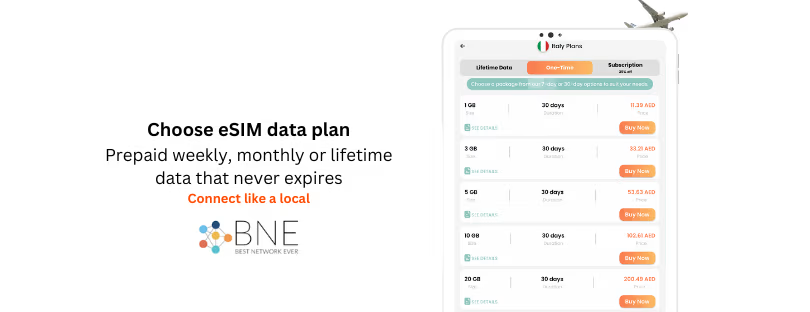
The Ultimate Guide to Overseas SIM Cards
If you’ve ever traveled abroad, you know the struggle—standing at the airport, squinting at your phone, wondering why it won’t connect, and dreading that expensive text from your home provider: “Welcome to . Roaming rates apply. You might want to sell a kidney.” Okay, maybe not that last part, but it feels that way sometimes.
That’s where overseas SIM cards come in. Whether you’re a frequent traveler, a digital nomad, or just heading out for a vacation, getting a local or international SIM card can save you money, hassle, and those dreaded roaming fees. But with so many options—physical SIMs, eSIMs, travel SIMs, and local prepaid options—how do you choose? Let’s break it down.
Why You Need an Overseas SIM Card
Unless you enjoy paying your carrier an absurd amount for roaming, an overseas SIM card is your best bet for affordable, reliable mobile data and calls. Here’s why:
- Avoid Sky-High Roaming Fees – Your home provider’s international rates can be outrageous. A SIM card designed for overseas use can cut your costs significantly.
- Local Rates, Better Coverage – A local SIM means you get the same rates as residents, usually with better coverage.
- Reliable Connectivity – Free Wi-Fi is tempting, but it’s often slow, insecure, or unreliable. A SIM ensures you’re always connected.
- Stay Reachable – If you need to call hotels, book taxis, or navigate with Google Maps, a local SIM is a lifesaver.
- Flexibility – Whether it’s a short trip or an extended stay, there are SIM options to match your travel needs.
Types of Overseas SIM Cards
Not all SIM cards are created equal. Depending on your travel style, one of these will work best for you:
1. Local Prepaid SIM Cards
If you’re staying in one country for a while, a local prepaid SIM is usually the cheapest and most reliable option. You can grab one at the airport, a mobile store, or even a supermarket.
| ✅ Pros | ❌ Cons |
|---|---|
| Best local rates for calls and data. | Usually requires an unlocked phone. |
| Good coverage and speed. | Some countries require ID or passport registration. |
| It can be topped up as needed. | It might not be convenient if you’re hopping between countries. |
2. International Travel SIM Cards
These are SIMs designed for multi-country use, perfect for globetrotters who don’t want to swap SIMs constantly. Companies like BNESIM, Airhub, Ubigi, and GigSky offer eSIM options, while brands like OneSimCard and SimCorner provide physical SIMs. BNESIM offers SIM cards and eSIMs.
If your phone supports eSIM (most newer iPhones and high-end Androids do), this is a game-changer. No physical card is needed—just scan a QR code, and you’re connected.
4. SIM Cards from Your Home Carrier (The ‘Lazy’ Option)
Many carriers offer international roaming packages or travel SIMs. This is convenient but is rarely the cheapest option.
How to Choose the Best Overseas SIM Card for Your Trip
With all these options, how do you pick the best one? Ask yourself these questions:
- Where Are You Traveling?
- One country? Go for a local SIM.
- Multiple countries? An international SIM or eSIM might be best.
- How Long Will You Be There?
- A short trip (less than a week)? eSIMs or travel SIMs work well.
- Longer stays? A local SIM is likely the best deal.
- How Much Data Do You Need?
- Just using WhatsApp and Google Maps? A small data plan will do.
- Streaming Netflix and posting non-stop? Look for unlimited or high-data packages.
- Do You Need Calls and Texts?
- Many travelers rely on WhatsApp, Skype, or FaceTime, so data-only SIMs are fine.
- If you need traditional calls, make sure your SIM includes voice minutes.
- Is Your Phone Unlocked?
- Locked phones can’t use foreign SIMs. Check with your carrier before you go.
Where to Buy an Overseas SIM Card
- Before You Travel: Online retailers like Amazon, Alertify, or SimOptions let you buy ahead of time.
- At the Airport: Usually more expensive but convenient.
- In Local Stores: Best for local SIMs but may require registration.
Pro Tips for Using an Overseas SIM Card
- Check Your Phone Compatibility – Some countries use different network bands. Make sure your phone works where you’re going.
- Turn Off Auto-Renewal on Your Home Plan – Avoid getting double-charged.
- Download Essential Apps Before You Leave – Google Translate, WhatsApp, and an offline maps app will make life easier.
- Keep Your Home SIM Safe – Store it in a safe place so you don’t lose it.
- Watch Out for Hidden Fees – Some SIMs charge activation fees or have tricky top-up rules.
Final Thoughts: Is an Overseas SIM Card Worth It?
Absolutely! Whether you opt for a local SIM, an eSIM, or an international travel SIM, having a dedicated overseas SIM card means:
- No bill shock when you get home.
- Reliable data when you need it.
- Freedom to explore without worrying about Wi-Fi spots.
If you travel often, it’s worth experimenting with different options until you find what works best for you. And if you’re still unsure, an eSIM is often the safest bet—easy to install, no hassle, and you can buy it before you even take off.
So, next time you head overseas, don’t be that person standing at the airport, panicking over no signal. Get your SIM sorted in advance and enjoy your trip stress-free!










